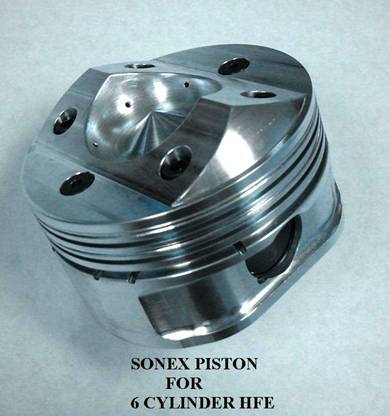|
||||
|
|
|
|||
| Home | Subscribe | Back Issues | The Organization | Volunteer | ||||
|
||||
Can a gas engine use diesel fuel with less pollution?by James BauernschmidtAnyone concerned with rising oil prices and pollution from fossil fuel might like to know about a new technology, which addresses both problems. Its application will put an end to the days of sooty smoke seen from accelerating diesel trucks and buses. The technology involves a slight modification to an engine part that can be mass-produced on existing manufacturing lines. The technology is the result of over thirty years R&D conducted by Dr. Andrew Pouring, a former professor and chairman of the Dept. of Aerospace Engineering at the US Naval Academy. Through his company Sonex Research, Inc. in Annapolis, MD (see www.sonexresearch.com), his work focused on improving the process of combustion through a combination of chemical and fluid dynamic effects. The technology is manifested in the new design of piston heads inside the engine. The Sonex pistons have uniquely shaped chambers with holes in them which bring about a more complete combustion through the turbulence created by high speed air flows emitted from the chambers. (See diagram below). The new piston can be used in one of two ways in a direct-injected (DI) engine. A standard DI diesel engine at compression ratios greater than 16:1 can be equipped with the Sonex piston, enabling overall soot reduction of approximately 50% and a reduction in NOx of 10% without exhaust gas recirculation. This application has little affect on fuel economy. These results were positively evaluated by the world-famous laboratory, Ricardo Consulting Engineers in England. 
But the most advantages come when applying the Sonex piston in a DI gasoline engine with compression at 12.5:1 or lower, while using a variety of fuels. This design is called Sonex Controlled Auto Ignition (SCAI). The SCAI process is basically controlled HCCI (Homogeneous Charge Compression Ignition), which manufacturers world wide are seeking to control because of its low emissions and good fuel economy. The beauty of the SCAI process is that it enables a gas engine to run with no spark plugs using either a heavier fuel such as diesel or military fuel JP5 or lighter alcohol fuels with greater efficiency and cleaner exhaust. Using JP5 in a single cylinder engine, the Sonex laboratory measured an overall soot reduction of approximately 90% and NOx reduction of approximately 80%. The need for elaborate aftertreatment of the exhaust is minimized. The result is a much lighter and more fuel-efficient engine which can run on heavier or lighter fuels, including gasoline. Sonex has recently successfully applied their SCAI process to a six-cylinder Subaru gas engine using JP5 fuel under a DARPA (Defense Advanced Research Projects Agency) contract and is confirming its single cylinder results. Diesel fuel offers several advantages over gasoline. Diesel is easier to make at our overworked refineries. MTBE contamination from gas tanks is not an issue. Diesel fuel is also not explosive (it will extinguish a burning match), so transporting it to gas stations would not attract terrorist activity. For several years, the US military has been trying to switch to using only a uniform kerosene based fuel (JP5) similar to diesel. Problems of attacks on convoys transporting gasoline have already confronted our forces in Iraq and reaffirmed the need for improvement. Also, because diesel is a heavier fuel, it contains more energy. The US Marine Corps has already applied another version of Sonex technology in their UAVs (unmanned aviation vehicles) with success. The same UAVs are now able to fly 20% farther using heavy fuel thanks to the Sonex technology. Unlike the hydrogen economy which will require vast changes to our infrastructure taking several decades, a diesel economy can be established now by using Sonex. However, several auto manufacturers either offer no diesel vehicles or diesels which are unavailable in several states because of emissions problems. They no longer have an excuse. With Sonex, much higher EPA standards are achievable. Ultimately, you, the customer, should determine what products are offered. Please tell your elected officials to mandate higher standards for industry. The above article was edited by the Sonex inventor, Dr. Andrew Pouring. The writer, James Bauernschmidt, is a minor shareholder of Sonex (<1% of outstanding shares). He can be reached at bauernschmidt@usa.net. The patent number for the Sonex piston is US 5,862,788, issued January 26, 1999. |
|
